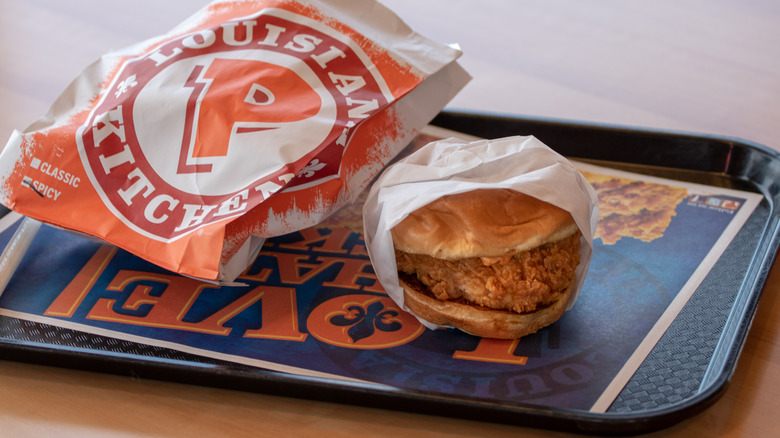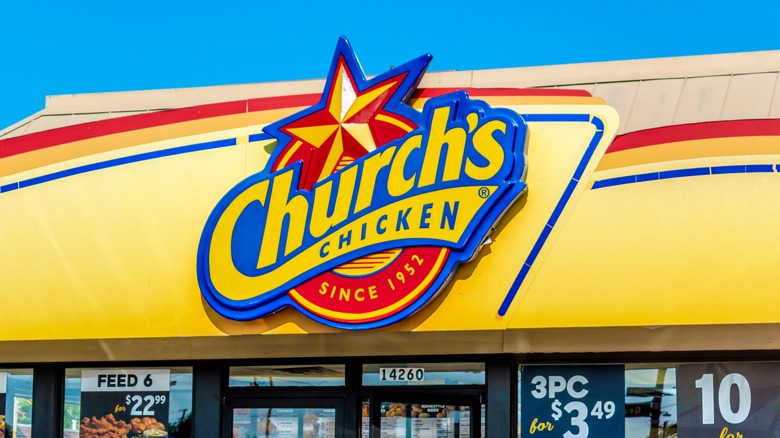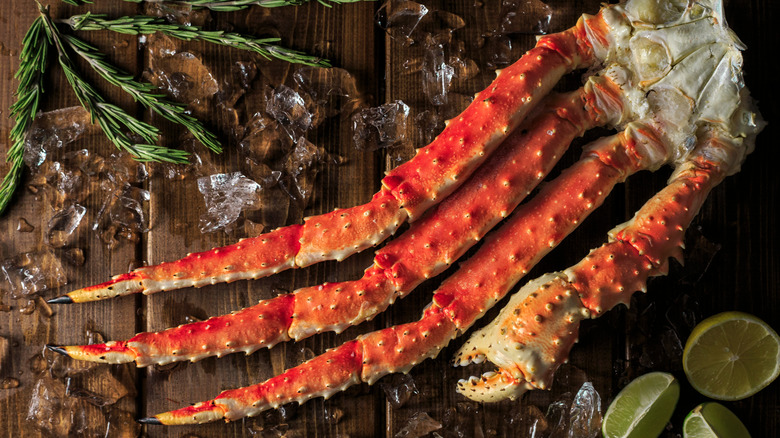The Time Popeyes Was Financially Wrecked
If you love fried chicken, chances are you love Popeyes. Though KFC has the most international popularity and Chick-Fil-A continues to grow by leaps and bounds, there's something about Popeyes' signature recipe that inspires diehard devotion in a way no other fast food fried chicken brand can match. Though there are regional brands with traction, such as Raising Cane's in the Midwest, Zaxby's in the South, and Bojangles in North Carolina, Popeyes has a draw that is unmatched — and is, crucially, the only name in Louisiana fried chicken.
But there was a time when the company's situation wasn't so rosy. In the early '90s — and despite its huge success — the company nearly went under entirely. That's right: We were almost denied the glory that is the Popeyes chicken sandwich long before its creation. The story of how things nearly went so wrong involves a single incredible miscalculation on the part of the company's founder and visionary, Al Copeland — purchasing Church's Chicken.
Copeland nearly bankrupted the company
Founded in New Orleans in 1972 by a flamboyant Big Easy figure named "Big" Al Copeland, Popeyes (originally called "Chicken on the Run") became a major name in fast food relatively quickly thanks to its originality in bringing cajun seasoning to the American masses. By the late 1980s, they boasted hundreds of locations as the third-largest chicken chain in America. They were actually pretty solvent — until Copeland tried to take a shortcut by purchasing Church's Chicken.
In 1989, Church's was the second-biggest chicken chain, and Copeland reasoned that if he bought them out, he'd suddenly be able to corner the market. In theory, that sounds great, but the problem was threefold. First, he paid an exorbitant fee for the purchase: $330 million, or over $800 million in 2023 dollars. Second, Church's was already in bad shape financially. Third, the sudden acquisition of a competing brand meant his own franchises were cannibalizing each other from geographic proximity. Ultimately, Copeland's debt got so bad (nearly $400 million) that he had to sell the company to his creditors in 1991 — which saved it from going under.
Copeland ultimately won out, though, thanks to a business decision as shrewd as his Church's acquisition had been disastrous: he had trademarked Popeyes' signature recipe. If the new owners wanted to keep selling Popeyes chicken, they had to keep paying him for it, and oh boy, did they.
This isn't the only time a food company has faced ruin thanks to one terrible decision
Restaurant chains have, of course, faced financial disaster before thanks to one terrible miscalculation on the part of their owners. A few of these companies, like Popeyes, managed to bounce back: Red Lobster's "endless crab" promotion is a perfect example. In 2003, the company came out with the idea of giving customers as many snow crab legs as they could eat for just $22.99 on the basis they'd make money because "who's going to sit there and eat crab legs for hours?" Everyone, it turned out — people turned out in droves for three, four, or even five helpings. Combined with the rising price of snow crabs, the end result was that the company lost millions in profits and nearly tanked before narrowly pulling through.
Other companies haven't been nearly as lucky. Quizno's was once one of the three largest sandwich chains in the world, and toasting subs on a moving belt was its big innovation. But there's the issue: "largest" is the biggest reason they fell from grace. The company badly over-expanded in the late 2000s, cutting into individual stores' profits and creating a rickety foundation that inevitably led to collapse. Subway, it's worth noting, also over-expanded around the same time — but their market share meant they were able to mostly absorb the loss, while Quizno's wasn't so lucky.


